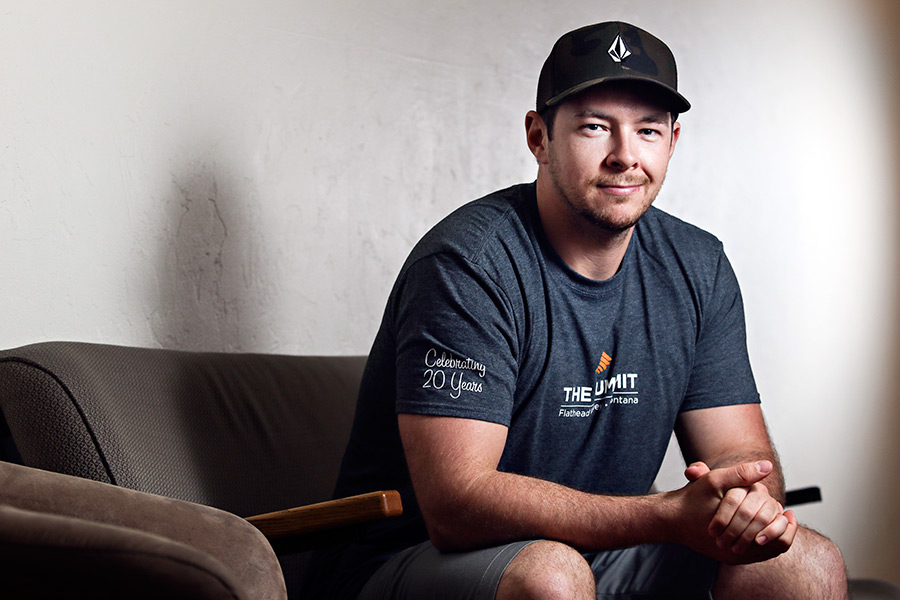On Wednesday, July 17, 2013, a schoolteacher from Georgia was on vacation in Glacier National Park when his sunny stroll to St. Mary Falls was hampered by an afternoon thunderstorm.
The teacher and several other hikers on the trail briskly rushed back toward the safety of their cars along Going-to-the-Sun Road. As the storm intensified, thunder rolled across the valley and lightning flashed. About a mile from the trailhead, a bolt of lightning cracked from the sky and struck the trail ahead. Spooked but not deterred, the teacher forged on.
Moments later, as he rounded a bend, the man from Georgia came upon a truly unsettling sight: two lifeless bodies in the middle of the trail, their boots partially melted from the 50,000-degree bolt of lightning that had just shot from the sky.
There is a 1 in 1.9 million chance you’ll be struck by lightning in your lifetime. Despite those long odds, about 260 people are injured in lightning-related incidents in the United States every year. About 10 percent of those victims are killed, according to data from the National Weather Service. Between 2005 and 2014, three people in Montana were struck and killed by lightning.
The Rocky Mountain states have the highest rate of lightning-related fatalities per capita in the United States, and many of those incidents happen while people are recreating.
July 17, 2013, began like any other summer day in Glacier. Travis Heitmann, a 23-year-old native of Kalispell, and some friends decided to go for a hike on what began as a pleasant, sunny day. A friend from high school, Kinsey Leishman, 23, had just purchased a new digital camera and wanted to try it out. Early that morning, Heitmann, Leishman and an 11-year-old boy Heitmann was mentoring set out for Glacier, making many of the typical stops along the way: Lake McDonald, The Loop and Logan Pass. The trio had originally hoped to hike to the Hidden Lake overlook, but like so many summer days they could not find parking. So the group continued east.
Six miles down the road they pulled up to the St. Mary Falls Trailhead and made the two-mile hike to Virginia Falls. Along the way they stopped to take photos of the surrounding scenery. Overhead, storm clouds began to gather from the east.
At around 4 p.m. the approaching storm turned violent and Heitmann and Leishman decided to return to the safety of the car. As they briskly hiked back, the lightning bolts continued to strike closer to the trail. About a mile or so from the trailhead, a bolt slammed the earth and dropped Heitmann and Leishman instantly. The 11-year-old boy was thrown from the trail. The bolt had struck with enough energy to power a 100-watt light bulb for more than three months.
A minute later, Steven Keith, the schoolteacher from Georgia, came around the corner and saw Heitmann and Leishman. As he looked at the lifeless bodies he noticed another hiker up the trail looking back, panic-stricken. The pair dropped to the trail and started administering CPR.
In an interview a few days later, Keith said when he checked Leishman, she was not breathing but her eyes were open. As he tried to breathe life into the woman, he said he could taste electricity.
As the two hikers tried to resuscitate Heitmann and Leishman, one of them looked off the trail and saw the unconscious 11-year-old. With Leishman breathing on her own again, Keith ran over to help the boy. As he pushed on the boy’s chest he pleaded with him to wake up, even slapping him in the face. A few moments later, the boy started to breathe again. By then, other hikers and park rangers began to arrive. The three victims were placed on stretchers and taken to the Sun Road, where Heitmann and Leishman were loaded onto ambulances and taken to the hospital. The boy was airlifted to Kalispell Regional Medical Center.
Heitmann woke up late that night at KRMC surrounded by family. All three survived their violent interaction with Mother Nature.
“When I woke up everything felt like a dream,” he said.
Heitmann, Leishman and the 11-year-old all spent the next four days in the hospital before being released. Heitmann received multiple burns to his feet that melted his hiking boots, which he kept as a keepsake from that day. Heitmann still sees a specialist for chronic neck pain he received in the lightning strike, but otherwise he has gone on to live a healthy life. Others are not so lucky, and lightning strike victims frequently suffer from long-lasting trauma to the brain and nervous system.
Three years later, Heitmann’s memories of the day are still fuzzy and most of what he recounts from the incident is what was told to him by friends and family. Today, he works as a youth counselor in Kalispell but hopes to use his music degree in the coming years. He also still hikes in Glacier Park, although he keeps a closer eye on the weather.
“After that day in Glacier I decided I needed to do something cool with my life,” he said. “Your life can end in an instant and it’s too precious to waste.”
